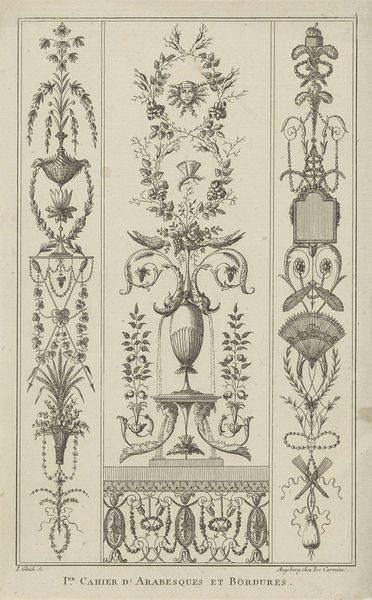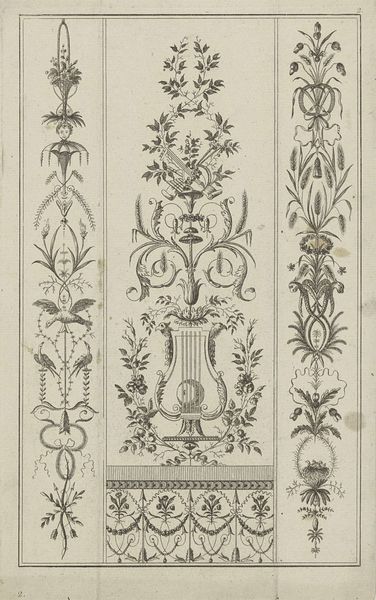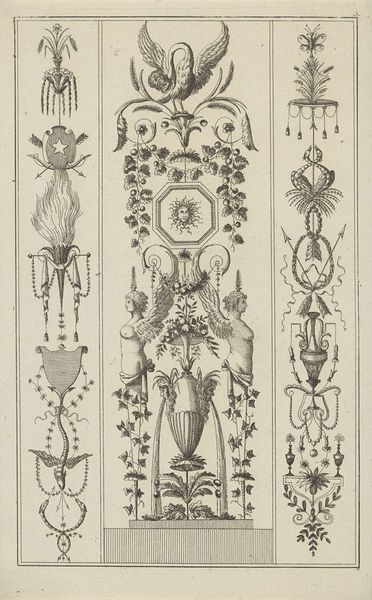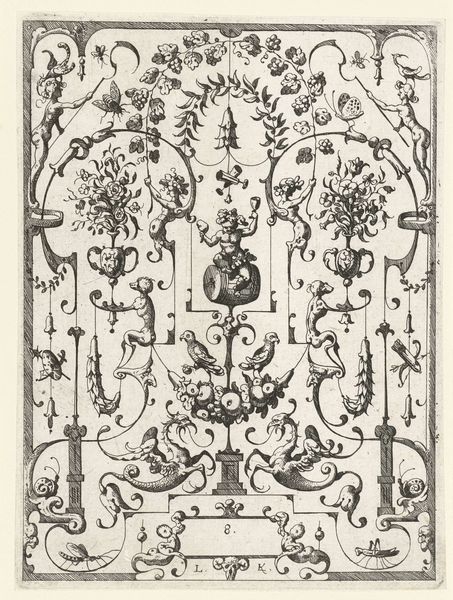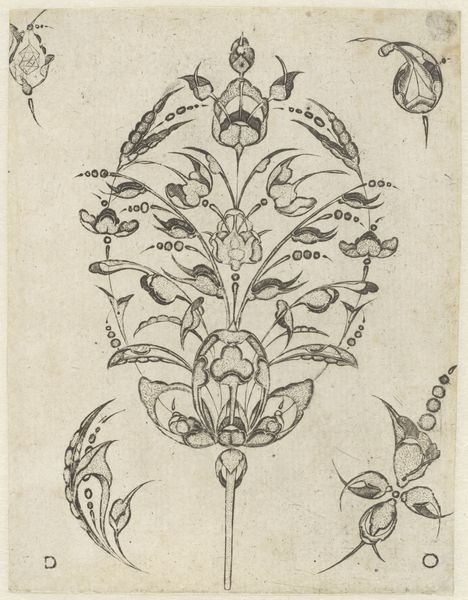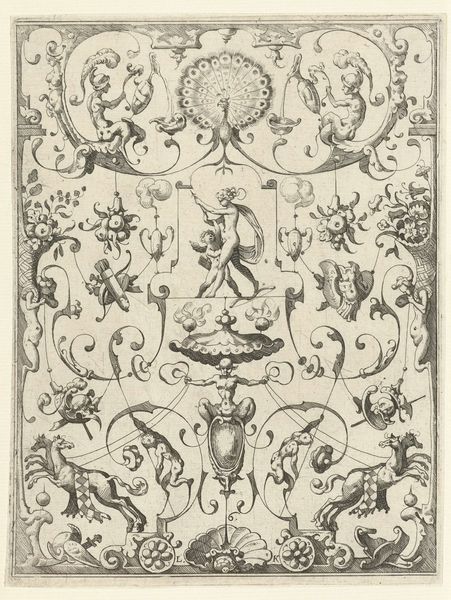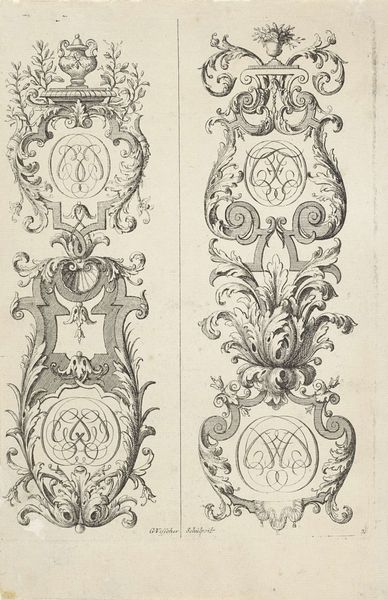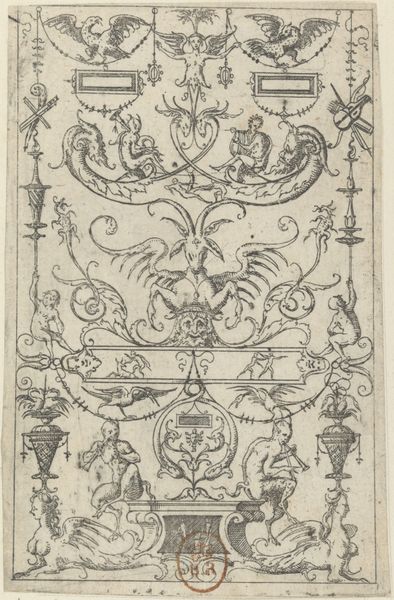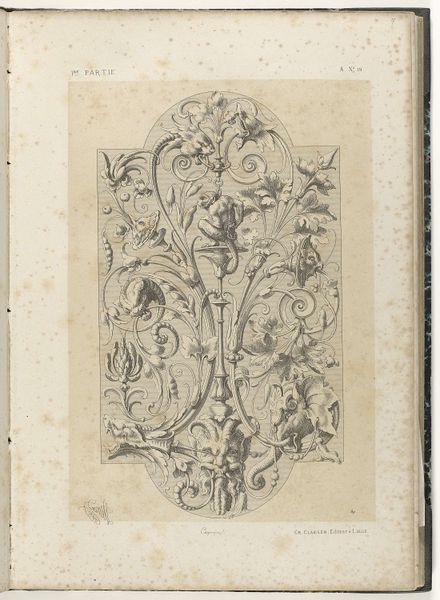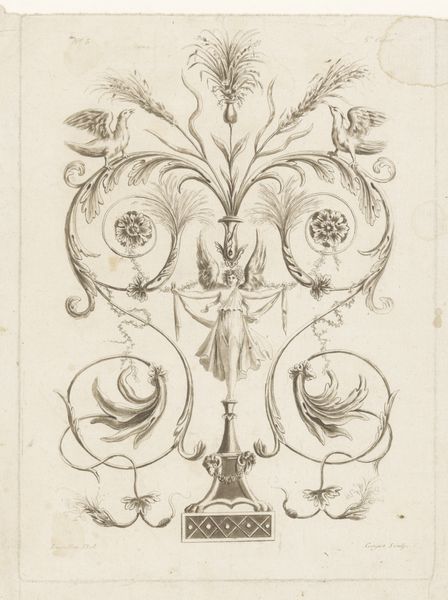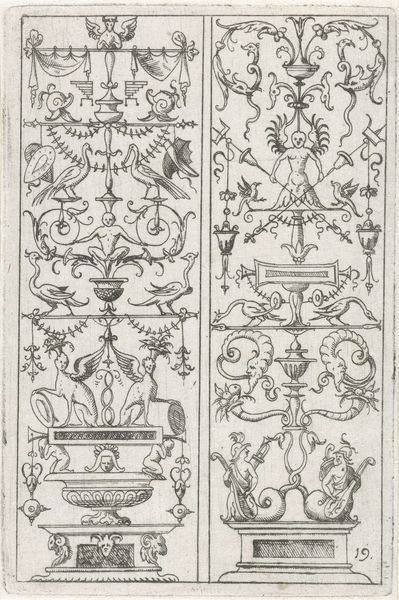
drawing, paper, ink, engraving
#
drawing
#
neoclacissism
#
pen drawing
#
paper
#
form
#
ink
#
line
#
decorative-art
#
engraving
Dimensions: height 298 mm, width 187 mm
Copyright: Rijks Museum: Open Domain
Curator: It’s funny, the first thing that strikes me is that it reminds me of a really elaborate cake decoration – the kind you’d see on some royal’s wedding cake. But somehow... older. Editor: Well, you're not wrong. What we have here is "Arabesken met medaillon en gevleugelde vrouw," a pen and ink drawing dating from 1780 to 1830, by Joseph Gleich. It resides here at the Rijksmuseum and falls squarely into the Neoclassical movement, showcasing both precision and a high level of artisanal skill. I see this as a meditation on form—pure design divorced from practical purpose. Curator: Divorced from purpose? I wonder… Isn't all ornament *meant* to evoke *something*? I find these lines… restless. It’s a delicate thing, I grant you. Editor: The elegance of the line work certainly makes it easy to appreciate, though. If you think about the engraving process involved to produce such designs, the labour that goes into it, its value as a commodity that feeds social aspirations becomes very apparent. Curator: Labor yes, and such a careful act of craft, I keep imagining the artisan tracing the same shapes, feeling the stylus in hand— Editor: See how this imagery pulls from nature, mimicking floral motifs with mathematical precision. Even the mythological figure appears constructed from pattern. It hints at a world obsessed with order and categorization. Curator: Yes, obsessed…or maybe comforted? These images, pulled into rigid, repeating order offer some type of grounding effect. Imagine commissioning such work. To me this feels like more than decoration. It reflects power, security, and a deep desire for… harmony? Perhaps in a time when harmony felt particularly elusive? Editor: A good point. These drawings, disseminated widely, become tools, materializing this desire into something real that commoners can touch, aspire to—or be further alienated by, depending on their station. It creates another material level of access and power. Curator: Ultimately, it speaks to the layered relationship between art, aspiration, and human yearning. An invitation to remember our common, reaching impulses through the precision of these lines. Editor: A final question - in what ways does it resonate today in a world inundated with ornament. Do our equivalent disposable decorations inspire and alienate at the same time, and what are we building today that offers stability for future generations?
Comments
No comments
Be the first to comment and join the conversation on the ultimate creative platform.
